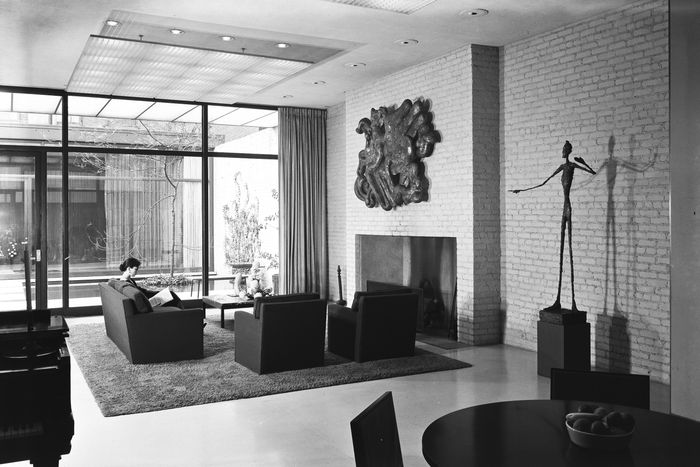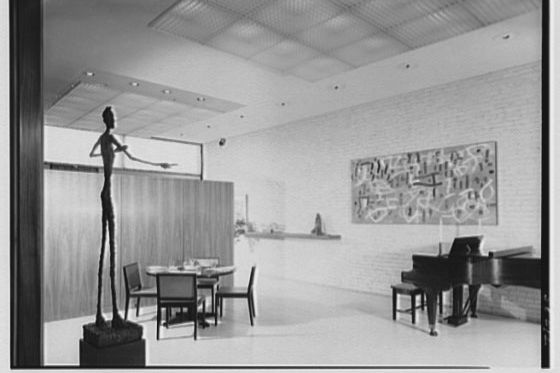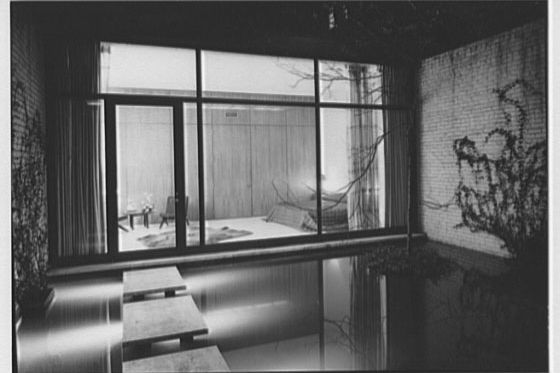
The cosmetics heir and billionaire philanthropist Ronald S. Lauder has sold 242 E. 52nd Street, a tiny modernist jewel box designed by Philip Johnson, for $19.999 million. The buyer is listed in city records as an LLC, Ludo USA, and the sale was an off-market deal — there was no listing and apparently no whisper listing, either. One prominent uptown townhouse broker we spoke to said he’d heard nothing of its being shopped around. Lauder did not immediately respond to a request for comment, but apparently liked the house quite a bit: He first bought it 1989, sold it to London gallery owner Anthony d’Offay, then rebought it at auction for $11.16 million in 2000.
The home was commissioned in 1950 by Blanchette Rockefeller, the wife of John D. Rockefeller III, who didn’t want her modern-art collection cluttering up their Beekman Place co-op, according to a 2017 story in T magazine. Designed as an art gallery and entertaining space, the building, known as the Rockefeller Guest House, is small — just over 2,000 square feet — with two rooms on the first floor separated by an open-air pond and a formerly unheated upstairs with two bedrooms. (Johnson said that he only created a second floor because a one-story house “would look all wrong” and ignored the upstairs because it didn’t “exist” for him.) The house had no kitchen, just a bar manned by a butler, but one was eventually installed in the basement. It is, in other words, mostly still an entertaining space. One whose most recent sales price works out to about $10,000 per square foot — the very tippy top of the luxury residential market, about what penthouse in trophy towers go for. (At Minuet, the 15-story condo next door that allegedly “pays homage” to the Guest House and whose existence one real estate insider speculated may have prompted Lauder to sell, the average price per square foot is $2,147.)
Rockefeller donated the house to MoMA in 1958, where she was twice president and the founder of its junior council. It was used as “an extension” of the museum, a “space to woo potential donors, to entertain artists and to display Modernism in its purest and most impressive form,” according to the Times.
The house soon started to trade like the art it once housed. MoMA eventually sold it, and for eight years starting in 1971, Philip Johnson himself lived there with his partner, David Whitney. The owners had asked Johnson to help find a tenant, and the couple decided to take it for themselves. “We were living in a ratty old two-room walk-up and thought this would be a marvelous change,” Whitney told the Times in 1974. Perplexed by his critics’ claims that his homes were unlivable, Johnson redecorated, but apparently saw no need for a kitchen — he just took his meals at the nearby Four Seasons. As for having to go through the open courtyard and over the pond’s stepping stones to get from his bedroom to the living room, Johnson seemed exasperated that the Times reporter would even ask. “Why it takes seconds,” he told her.








